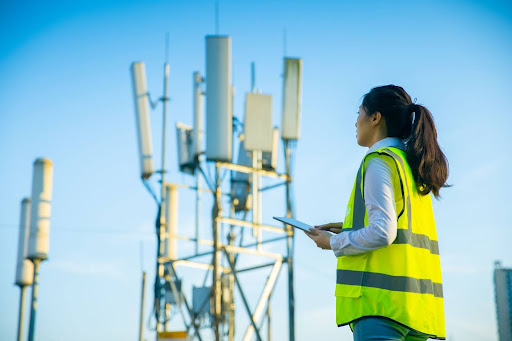Virtually every business action, from a customer’s click to a delivery truck’s route, is tied to a specific location. This geographic component is the silent engine driving operational efficiency, customer experience, and strategic planning. The market for location and geospatial data management is robust, with analysts forecasting a growth of over 12% CAGR from 2023–2028. This isn’t just a trend; it’s a critical investment. According to IDC, 43% of organizations that weave location data into their core systems report achieving 20%+ growth in KPIs. Google Cloud location intelligence solutions, powered by the Google Maps Platform and cutting-edge geospatial analytics, are turning this rich data into transformative action across industries.
At SADA, we’ve seen firsthand how this technology transcends simple navigation, becoming a core component of digital transformation. It’s not just where something is, but what that location tells you about your business and your customers. The solution is driven by three foundational forces: generative AI, geospatial analytics, and 3D immersive mapping.
The guiding forces of geospatial innovation
Through the Google Maps Platform, these three pivotal forces are transforming location intelligence from a simple utility into a strategic driver of growth and competitive advantage:
- Generative AI (Gen AI): The acceleration of AI is unlocking new opportunities for an enhanced user experience and driving insights. In a geospatial context, Gen AI can be used to securely combine insights from Google Maps data with your organization’s proprietary data in BigQuery. This allows you to unleash the power of Gen AI to build complex data pipelines using both structured and unstructured data, leading to unprecedented insights.
- Geospatial analytics: This is the intelligence layer. Geospatial intelligence and analytics are mission-critical not just to strategic business insights and operations, but also to our planet’s sustainable future. This capability enables powerful analysis that transforms raw location markers into complex, decision-making insights, such as understanding population density or environmental impact.
- 3D immersive mapping: Maps are rapidly evolving from simple 2D information tools to 3D immersive, data-rich experiences. This technology gives users a highly detailed, interactive model of the world that brings real-world experiences to consumers, fundamentally changing how businesses approach everything from real estate visualization to engineering planning.
By harnessing this powerful combination of innovation—generative AI, geospatial analytics, and 3D mapping—Google Cloud location intelligence is driving measurable business outcomes across sectors. Here are ten game-changing ways this technology is delivering increased revenue, cost savings, and a crucial competitive advantage.
10 transformative use cases across industries
1. Optimizing last-mile logistics and delivery

In the age of instant gratification, the final leg of the supply chain—the last mile—is the most complex and expensive part of getting a product to the customer’s door. This is a massive priority for the sector, with location intelligence being critical for 48% of transportation and logistics organizations (IDC). Businesses are under constant pressure to deliver faster and cheaper while providing the customer with crystal-clear visibility into their order’s journey. Google Cloud location intelligence moves the logistics industry beyond static maps and simple GPS, allowing companies to dynamically manage fleets and routes in real-time, meeting aggressive delivery commitments and turning the last mile into a competitive advantage.
- The game-changer: Using Directions API and advanced routing to calculate the most efficient multi-stop routes based on real-time and predictive traffic, time-window constraints, and vehicle capacity.
- Impact: Significantly reduced fuel costs, faster delivery times, and improved customer satisfaction with accurate, real-time ETAs and driver tracking.
2. Enhancing site selection and expansion

The decision of where to open a new store, build a factory, or install a critical piece of infrastructure is one of the most significant investments a business can make. Traditionally, this process relied on slow, siloed data and educated guesses. Today, Google Cloud’s location intelligence transforms site selection into a precise, data-driven science. By integrating powerful geospatial analysis with demographic trends and consumer behavior data, companies can pinpoint the perfect location that maximizes market reach and ensures long-term viability.
- The game-changer: Combining internal sales and demographic data with Google’s rich Points of Interest (POI) data (covering over 250 million businesses) and population insights to identify optimal, high-potential new locations.
- Impact: Maximized return on investment (ROI) for new facilities, more accurate forecasting of local demand, and better resource allocation.
3. Revolutionizing field service and workforce management
For industries that rely on technicians, auditors, or nurses visiting multiple locations daily, time is money, and coordination is a constant headache. Inefficient scheduling and unexpected traffic can lead to missed appointments, higher costs, and frustrated customers. Google Cloud brings real-time spatial awareness to the mobile workforce, enabling dispatchers to move beyond manual planning and use intelligent routing to ensure the right employee with the right skills arrives at the job at the most efficient time, dramatically improving service capacity and first-time fix rates.
- The game-changer: Dynamic scheduling that uses real-time location to match job needs with the closest, most qualified technician, instantly optimizing their daily itinerary.
- Impact: Up to $21 million saved through better project coordination (as seen in public sector examples like the Seattle DOT), increased service call capacity, and faster response times for critical repairs.
4. Personalizing customer engagement (geomarketing)
Consumers expect personalized, contextually relevant experiences. For retailers and marketers, this means transcending broad geographic campaigns and communicating with customers precisely when and where they are most receptive. Google Cloud location intelligence allows businesses to analyze customer movement patterns and proximity to physical locations, enabling hyper-local, timely geomarketing campaigns that bridge the gap between digital interaction and in-store conversion, making every touchpoint more effective.
- The game-changer: Using Places API for accurate location lookups and combining it with user data to send targeted, highly relevant offers or information when a customer is near a physical store.
- Impact: Higher foot traffic, improved local marketing campaign performance, and a seamlessly integrated online-to-offline customer journey. It’s no surprise that this is a critical investment area for 49% of Retail/Wholesale/Hospitality companies (IDC).
5. Public sector: modernizing infrastructure management

Public agencies are tasked with maintaining billions of dollars in public assets—roads, utilities, government buildings, and more—often with limited budgets and outdated systems. Knowing the exact location and condition of this infrastructure is essential for preventative maintenance and effective budget planning. Google Cloud’s geospatial tools provide a common operating picture for city planners and public works departments, creating a visual, centralized inventory of every asset, project, and utility line to ensure coordination, reduce risk, and maximize asset lifespan.
- The game-changer: Creating a centralized, visual system that overlays all critical infrastructure, planned projects, and asset health data onto a Google Maps base.
- Impact: Prevented costly conflicts between concurrent construction projects, streamlined maintenance scheduling for assets like bridges and streetlights, and improved long-term urban planning.
6. Public sector: elevating emergency response and preparedness

When natural disasters or crises occur, the speed and accuracy of a public agency’s response directly impact the safety and survival of citizens. A delay of minutes can be the difference between a successful rescue and a catastrophe. Google Cloud location intelligence equips emergency management teams with predictive modeling and real-time mapping capabilities that fuse disparate data sources—from weather alerts to 911 call locations—providing a unified, dynamic view of the incident and allowing for faster, more effective deployment of police, fire, and medical resources.
For example, in the realm of citizen communication, the City of Los Angeles Information Technology Agency (ITA) previously relied on static PDF maps to share urgent, geographically relevant information during events like mudslides and wildfires. Using Google Maps Platform, the ITA can now instantly share critical information with citizens using a familiar interface, developing and posting informational maps within one hour.
- The game-changer: Using geospatial analytics to model and visualize high-risk areas for natural disasters (like flooding or wildfires), optimize emergency vehicle dispatch routes, and track the real-time status of first responders.
- Impact: Faster deployment of aid, better resource pre-positioning, and enhanced situational awareness for decision-makers during a crisis. The LA Skirball Fire map alone received 3.5 million views within 36 hours of going live, demonstrating the platform’s ability to deliver useful information in a highly consumable way.
7. Financial services: combating fraud and risk
In financial services, security and trust are paramount. A common tactic for fraudsters is to perform transactions in locations inconsistent with a customer’s typical geographic patterns. Google Cloud location intelligence offers a sophisticated layer of spatial analysis. By using accurate geocoding and proximity data, institutions can build advanced risk models that flag genuinely suspicious activity without compromising the seamless, global experience customers expect from modern banking. As a result, location intelligence is a critical priority for 60% of financial services organizations (IDC).
- The game-changer: Analyzing the physical distance between a cardholder’s historical location, their known address (via Geocoding API), and the location of a transaction to immediately flag suspicious activity.
- Impact: Reduced financial losses from card-not-present and geographically inconsistent fraud, enhancing security for both the institution and the customer.
8. Real estate and property tech: richer property visualization

In real estate, the adage “location, location, location” is timeless, but how that location is presented to buyers is rapidly evolving. Customers no longer want a static image; they demand an immersive, contextual experience that helps them understand the neighborhood and their potential life in a new area before they ever step inside. Google Cloud integrates its powerful mapping content, including high-resolution satellite and Street View imagery, to transform property listings into dynamic, data-rich portals that drive engagement and accelerate purchasing decisions.
- The game-changer: Integrating high-resolution, immersive maps, Street View, and 3D terrain data into property listings, enriched with local amenities and neighborhood data.
- Impact: Increased customer engagement with listings, a more informed buying experience, and reduced time-to-close by providing crucial local context.
9. Public sector: optimizing public health initiatives
Identifying patterns in public health—from the spread of a disease to the distribution of health resources—is fundamentally a geographic problem. Public health agencies must understand where populations are underserved and how environmental factors impact community well-being. Google Cloud enables these agencies to perform spatial epidemiology and social determinants of health analysis, allowing them to precisely target interventions, optimize clinic locations, and ensure equitable access to care across all neighborhoods.
- The game-changer: Spatially analyzing demographic data alongside health crises (like the Opioid Use Disorder epidemic or disease outbreaks) to identify underserved populations and optimize the placement of treatment centers or mobile testing sites.
- Impact: More equitable distribution of public services, improved preventative care planning, and the ability to track and predict public health trends spatially.
10. Telecommunications: enhancing network planning

The race to deliver next-generation connectivity like 5G and fiber-to-the-home is a capital-intensive challenge requiring millimeter-level precision. Placing network infrastructure incorrectly can lead to billions in wasted investment and poor service quality. Google Cloud’s advanced mapping, 3D building data, and terrain modeling allow telecom providers to simulate signal penetration and line-of-sight analysis before a single shovel hits the ground, ensuring that new investments strategically fill coverage gaps and maximize return.
- The game-changer: Using accurate map data and 3D modeling to simulate signal propagation, identify optimal sites for new cell towers or fiber lines, and analyze current coverage gaps relative to population density.
- Impact: Faster network rollout, reduced capital expenditure on ineffective sites, and improved service quality for customers.
Partnering with SADA, An Insight company, to unlock location intelligence
Google Cloud provides the world’s most powerful location-based services, but unlocking their full potential requires expertise. SADA, with our specialization in Maps & Geospatial solutions, translates this technology into tangible business outcomes.
Whether you’re a retailer planning your next expansion or a state agency preparing for the next emergency, SADA helps you integrate Google Cloud location intelligence into your core operations. Let’s start the conversation about how the power of place can drive your organization’s next great transformation.
Ready to see your data in a new light? Contact SADA to explore custom location intelligence solutions built on Google Cloud.



